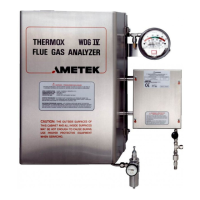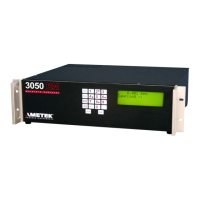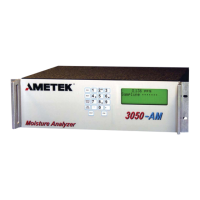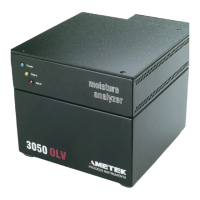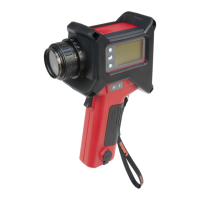Maintenance and Troubleshooting | 6-11
General Troubleshooting
Your system may pass calibrations, yet still seem to be reading incorrect
oxygen levels. If this is the case, you may want to check the following:
Leak Check
This check does not apply to Insitu users.
Leaks can lead to inaccurate readings, especially if operating under a sig-
nificant pressure or vacuum.
• Checkthatallcompressionfittingandpipethreadconnectionsare
leak tight.
• Besurethatthemountingplateormountingflangegasketontherear
of the sensor is in place (see the “Sensor Mounting” section in Chapter
2 for details on the placement of the gasket).
Snifng for Leaks
For processes under vacuum you can check for leaks by sniffing the fit-
tings with another gas (for example, nitrogen or pure oxygen), being sure
to avoid the area over the top of the cell.
1. Use a piece of tygon or plastic tubing with a 1/8” stainless steel nozzle
to apply the gas from a cylinder (using stainless steel prevents any
problems that might occur with plastic melting the nozzle on hot sen-
sor components).
2. Monitor the response from the cell. When the cell millivolt reading
changes, it indicates a leak in that area of the plumbing (the vacuum
of the process pulls in the gas).
3. If not convenient to view the control unit display, you can also apply a
volt meter to terminals 1 and 2 on the sensor board (Cell + and Cell -)
to see if the cell millivolts change, indicating a leak.
Pressurizing for Leaks
1. Remove the sensor from the process (after allowing sensor to cool)
and pressurize it with 5 lbs. of air, plugging any exiting ports, the inlet
probe, and exhaust tube holes. Then go over the sensor fittings with a
leak detector fluid.

